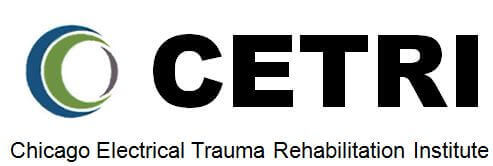
Immediate Steps to Take After an Electrical Injury
When faced with an electrical injury, immediate and correct action can make a significant difference in the outcome. The first step in caring for someone who has suffered an electrical injury or electrocution, whether in the workplace or outside of it, is to ensure that the power source is switched off. This critical initial response helps prevent further harm and protects the safety of both the victim and the responder.
Importance of Turning Off the Power Source
Electricity poses a serious risk of injury due to its ability to cause burns, cardiac arrest, and other life-threatening complications. In the event of an electrical accident, the first priority should be to eliminate the source of electricity to prevent additional injuries. Turning off the power source helps reduce the risk of further harm and allows for safer assistance to the injured individual.
Responding to an Electrical Injury: Key Steps
The Bureau of Labor Statistics reports that, on average, electrical injuries in the United States result in around 150 fatalities. In such situations, below are the immediate and correct actions to take to ensure safety when responding to an electrical injury:
- Safety First: Before approaching the injured person, ensure that the area is safe for you to enter. Do not touch the person if they are still in contact with the electrical source.
- Turn Off the Power: Locate the power source and switch it off immediately. This might include unplugging devices, switching off circuit breakers, or disabling power to the affected area. If unable to locate the power source, use a non-metallic object to move the person away from exposed wires before administering first aid.
- Call for Help: Contact emergency services as soon as possible, especially if the person shows signs of severe injury such as loss of consciousness, burns, or difficulty breathing.
- Assess the Situation: Once the power is off, carefully assess the scene to determine the extent of the injury. Check for breathing and a pulse. Perform CPR if necessary and if you are trained to do so.
- Provide First Aid: Attend to any visible injuries such as burns by cooling them with clean water or covering them with a clean, dry cloth. Do not apply ointments or creams.
- Monitor Vital Signs: Keep a close eye on the person’s condition while waiting for medical help to arrive. Be prepared to provide information about what happened and the victim’s symptoms.
Seeking Professional Medical Care
If an electrical injury occurs, immediate medical attention in an emergency room is essential, especially if the person experiences loss of consciousness, burns, cardiac irregularities, or difficulty breathing. Even when initial symptoms seem mild, internal damage may not be immediately apparent. If pain, weakness, numbness, cognitive changes, or other symptoms develop days, weeks, or even years after the injury, patients should consult specialized services such as the Chicago Electrical Trauma Rehabilitation Institute (CETRI) for comprehensive evaluation and rehabilitation.
The first and most critical step when assisting someone who has suffered an electrical injury is to ensure that the power source has been turned off. Taking prompt, cautious action, followed by seeking appropriate medical care, can make a significant difference in the person’s recovery. Always remember that safety comes first when responding to any electrical emergency.
